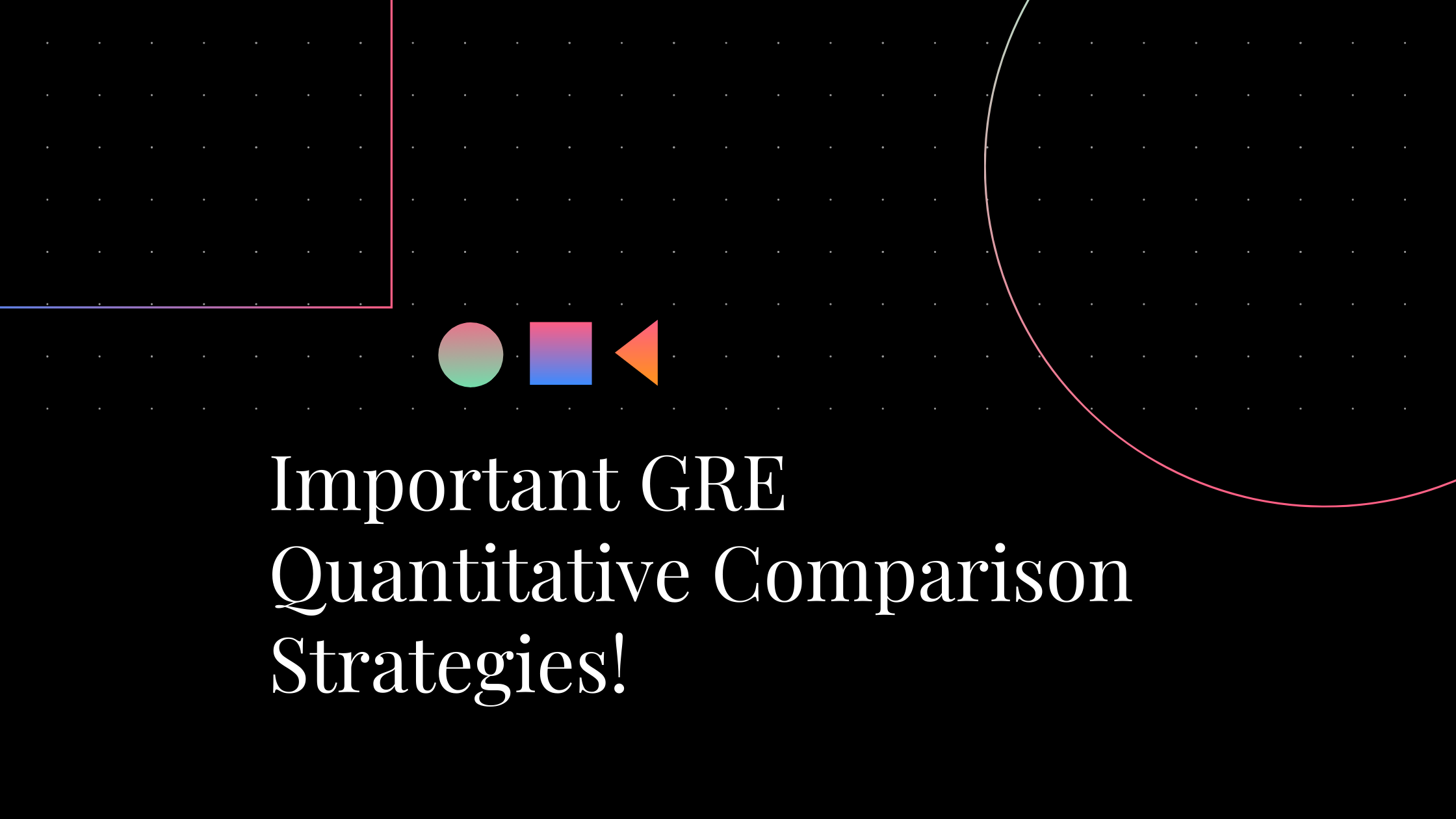Important GRE Quantitative Comparison Strategies!
While it may seem like Quantitative Comparison is just one question type, it has several subparts. And so, in order to score high marks in the Quantitative Comparison, you need to learn the strategies for approaching such questions.
Also Read: Quantitative Reasoning Section Wise Understanding
Quantitative Comparison Strategies
- Approximation
Approximation as a skill helps in your overall GRE performance, but especially in answering QC questions. Keep in mind that QC is not a test of calculations. Rather, it tests the skill of comparison. So you should focus on doing as less calculations as possible and try to find out how the two quantities are faring. If you mind out the relation between them midway, your job is done.
Let us look at some examples as to how approximation can help in QC questions!
Quantity A Quantity B
Circumference of a circle with radius 6 36
- Quantity A is greater.
- Quantity B is greater.
- The two quantities are equal.
- The relationship cannot be determined from the information given.
Since Quantity B is a constant, there is no calculation about that part. You have to figure out the value for Quantity A, however, even for that, you need not do the whole calculation. We know, Circumference of a circle = 2πR = 12π. The value of π is 3.14. But you do not need to multiply it. Since π is greater than 3, you know the value of 12π will be greater than 36.
Thus, option A is right.
-
Matching Operations
This technique involves doing the same operations- addition, subtraction, multiplication, division or any other mathematical operation equally on both the numbers. The basic thing to remember is- perform the same mathematical operation on both the quantities and not just one of them.

Let us understand this with the help of an example:
X and Y are positive integers
Quantity A Quantity B
2x2 + 8y + 12 2x2 + 6y + 4
- Quantity A is greater.
- Quantity B is greater.
- The two quantities are equal.
- The relationship cannot be determined from the information given.
You can easily see that 2 is a common factor between them. Now divide the two quantities by 2 and you’ll get x2+ 4y + 6 and x2+ 3y + 2. Next, you subtract both the quantities, and you get- 4y + 4 and 3y. Since we already know y is a positive integer, this is a much simpler deduction to make.
-
Replace with Numbers:
This technique is useful, especially while doing algebraic calculations. Whenever your question has a lot of variables, you can replace them with numbers. Keep in mind, the numbers should have the same symbols as that of the original quantity. So if it’s mentioned that x and y are negative numbers, do not
This is a very popular technique that you can use on the GRE in general. Whenever you are faced with a tough problem that involves a lot of variables, you can simplify it by just substituting the variables in the given quantities with small numbers. But you need to be careful to substitute with only those numbers that are in line substitute them with positive numbers as they will definitely result in wrong answers. This seems obvious, however we often miss out on easy things under pressure.
Improve your GRE scores with GREKing!
As for example,
X and Y are positive integers
Quantity A Quantity B
2x 2 + 8y + 12 2x 2 + 6y + 4
- Quantity A is greater.
- Quantity B is greater.
- The two quantities are equal.
- The relationship cannot be determined from the information given.
Since the question stem explicitly states that x and y are positive integers, and no other conditions are mentioned, you can assume x and y to be any positive numbers. It’s totally up to you. Let us assume x = 1 and y = 2, substitute them in these quantities, and see what happens. Quantity A, which is 2×2 + 8y + 12, becomes 2(1) + 8(2) + 12 = 2 + 16 + 12 = 30 Quantity B, which is 2×2 + 6y + 4, becomes 2(1) + 6(2) + 4 = 2 + 12 + 4 = 18 So, clearly, Quantity A is greater. You can even test this method on the same question using other numbers for x and y, and you will arrive at the same conclusion every time.
However, you cannot be sure of the solution every time. So cross-check it with other values.
These are some of the strategies you can employ for scoring higher in the Quantitative Comparison questions in the GRE exam.
All the best!

















Leave a Reply
You must be logged in to post a comment.